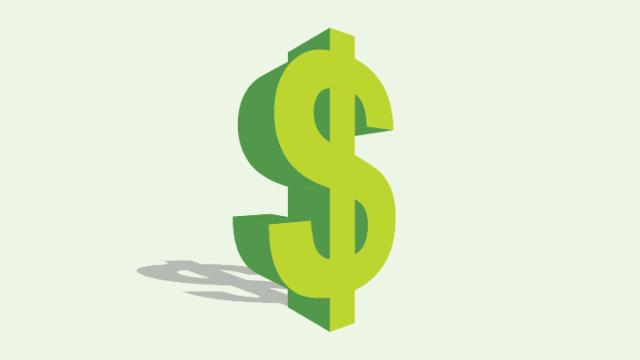This symbol first showed up in the 1770s, appearing in documents of English-Americans who had business dealings with Spanish-Americans. However, it wasn’t until the very early 1800s that it became popularised, around the same time as the first official US dollars were being minted. Previous to this, the symbol had already been in use as an abbreviation for names of Spanish currency, namely as an abbreviation for the Spanish peso “p”.
So how do you get from a “p” to the dollar sign, “$”? When writing financial documents referring to pesos, it was common to abbreviate the peso, for instance, “1 peso” to “1 p”. However, when pluralized, as in “1000 pesos”, it becomes “ps“.
When writing up financial documents and having to write “ps” numerous times, it started to become common among the English-American colonists to merge the “p” and the super scripted “s” as one. The top half of this symbol then produces something looking very much like a double vertical lined dollar sign.
In an even further bout of laziness, it became common among the English-American colonists to write the “p” with just one downward stroke vertically slashing the “s”, thus the ‘$’. In some of the earliest documents containing this short hand, it was common to see both the double slashed version as well as the single slashed version in the same document, referring to the same thing, the Spanish peso.
How then did this symbol that originally denoted pesos spread to also denote the US dollar? Around the same time the US was minting its first dollar coins, in 1792, Spanish currency was extensively circulated in the US and around the world. In large part due to this, the US chose to design the US dollar coins to duplicate the Spanish coins, in terms of matching the material and weight, hence value (at the time, the coins were made of silver and valued after the price of silver). Doing this allowed the US coin to be exchanged for a peso in a 1 to 1 exchange. Thus, it was natural to use the same symbol to denote the US dollar as was used for the Spanish peso.
Bonus Facts:
- One interesting thing to note here is that it was the English-American colonists who first started merging the “ps“, which eventually formed the dollar sign. So while the dollar sign was first referring to the peso, it was the English-Americans who “invented” the symbol. This is only noteworthy because it explains why we write dollar based monetary sums as “$10″ instead of “10$”, as the Spanish-Americans would have written it. Having the symbol proceed the numeric value was the common custom with the English pound and thus with the English-American colonists.
- You will also occasionally hear that the dollar sign actually comes from superimposing the “U” and “S” from United States on top of each other, but this is proven false in Cajori’s book, written in 1929, “History of Mathematical Notations Volume 2“; here he references some of the earliest documents containing the “$” symbol, which not only were referring to the peso in terms of the usage in those documents, but preceded the United States, so named, and also preceded the US dollar.
- Yet another popular incorrect theory held by many is that the dollar sign was derived from the “pieces of 8″ in the Spanish currency, with the 8 forming the “S” and the slash through it to denote currency. But once again, the earliest documents using this symbol clearly show that it is derived and used interchangeably with the “ps“, which denoted pesos, not the smaller coinage “pieces of 8″.
- The name ‘dollar’ derived from the word ‘thaler’ which is an abbreviation for the word “Joachimsthaler”, a coin type from the city of Joachimsthal (Jáchymov) in Bohemia, where some of the first such coins were minted in 1516.
Daven Hiskey writes for the wildly popular interesting fact website TodayIFoundOut.com. To subscribe to Today I Found Out’s “Daily Knowledge” newsletter,click here or like them on Facebook here.
Picture: OTA Photos/Flickr
